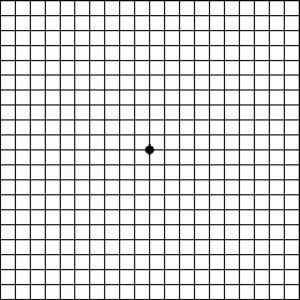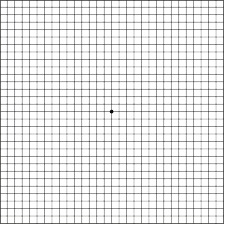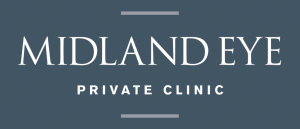Macular Degeneration Treatment
No waiting times, fast tracked appointments.
Book your consultation today. No waiting times.
0% finance available
No waiting times
World class local surgeons
What is Age Related Macular Degeneration?
Listen to Mr Mark Benson explains what Age-related Macular Degeneration(AMD) is.
Age-related Macular Degeneration (AMD) is an eye disorder in which the central retina, the macula, becomes damaged leading to reduction in central vision. AMD is the most common cause of serious loss of vision in Europe and the USA.
It affects the central (detail) vision, but normally leaves the outer (peripheral) vision unaffected. It is classified into two types: DRY which is much more common; or WET which occurs in 10-15% of cases, but is associated with more rapid and more marked visual loss.
Our consultant ophthalmic surgeon Mr Mark Benson explains what Age-related Macular Degeneration(AMD) is and answers some frequently asked questions.
Symptoms of Macular Degeneration?
- Dry type: gradual onset of difficulty reading with glasses.
- Wet type: rapid onset of distortion of straight lines (like a kink), and/or blurring.
Treatment for Macular Degeneration
There is little hard evidence that there is any preventative treatment for AMD, although most eye specialists recommend a good balanced diet containing leafy green vegetables, carrots and eggs. There is some evidence that nutritional supplements may be beneficial in preventing AMD progression and there are many different commercial brands now available.
It is probably best to get advice from an impartial source before starting on these and in the UK the Macular Disease Society is an excellent source of information.
In the dry type of AMD Low vision assessment and advice on magnifiers and lighting can be extremely helpful in maintaining reading and close work. In Solihull we are fortunate to have excellent low vision services within the NHS and in the private sector at Midland Eye.
In the past, conventional laser treatment was used to try to limit visual loss from wet AMD, but this has been superseded by newer treatments.
A more gentle type of laser, used in conjunction with an infusion of a photosensitising drug (photodynamic therapy – PDT) has also been used with some success, but again it has been largely replaced by drug treatments (see below).
Before the advent of successful drug treatment for wet AMD, one treatment was to detach the retina and rotate it so that the macula was placed on more healthy underlying tissue (with a corresponding rotation of the eyeball to level up the vision). This complex operation has been replaced by effective and simple drug treatments.
In some situations, where the central vision of both eyes has been lost to AMD, it is possible to improve vision by implanting a miniaturised telescope into one eye. This is only effective for a minority of sufferers, and careful assessment and patient selection is necessary.
The treatment of wet AMD has been revolutionised by the advent of two new drugs: Avastin and Lucentis. These two drugs are very similar. They are both given by injection into the eye, usually as an initial course of three one-monthly injections, followed by top-up injections later if necessary.
Studies comparing these two drugs have consistently shown them to be equally effective, and recent studies have shown that they are both very safe. Both treatments are immediately available at the Midland Eye.
Common questions
Here are some frequently asked questions from laser eye patients just like you.
Ageing is such a strong risk factor for development of this disorder, that it is normally referred to as Age-related Macular Degeneration (AMD). Dry AMD is present in over 50% of those aged 75 years and over, mostly in very mild degrees.
Other risk factors for developing it are family history, smoking, long sightedness, and light skin or eye colour. It is uncommon in Afro-Caribbean ethnicities.
For any reduction in vision that cannot be corrected with glasses you should consult your doctor, and consider referral to the Midland Eye. Urgent referral is necessary if any symptoms of the wet type are noticed, such as distortion of images (kinking of straight lines). Tests that may be necessary include the following:
- Amsler Chart – For any reduction in vision that cannot be corrected with glasses you should consult your doctor, and consider referral to the Midland Eye. Urgent referral is necessary if any symptoms of the wet type are noticed, such as distortion of images (kinking of straight lines). Tests that may be necessary include the following.
- Print the charts below
- Tape this page at eye level and where light is consistent and without glare
- Put on your reading glasses and cover one eye
- Fix your gaze on the centre black dot
- Keeping your gaze fixed, try to see if any lines are distorted or missing
- Mark the defect on the chart
- Test each eye separately
- If the distortion is new to you or has worsened, arrange for ophthalmological assessment urgently
- Always keep the Amsler Chart the same distance from your eyes each time you test
- Print new copies of the Amsler Chart as needed
- Your eye specialist will need to examine the retina in each eye with a bright light, and will use some drops to dilate the pupil, which will make your vision blurred for a few hours.
Optical Coherence Tomography (OCT). This special test will be carried out. The machine takes special photographs which can be converted into cross-section pictures of the retina to give a precise anatomical assessment of the macula.


Newer drugs are being developed to treat wet AMD, and the latest, Eylea (aflibercept) is now available at the Midland Eye. This is as effective as Lucentis, but is longer-acting and therefore requires fewer injections.
It is anticipated that other drugs will soon be available to treat wet AMD, in particular a drug called VEGF-TrapEye, and possibly some longer-acting drugs than those currently available. Midland Eye will be in the vanguard of AMD service provision as these new treatments become available.
